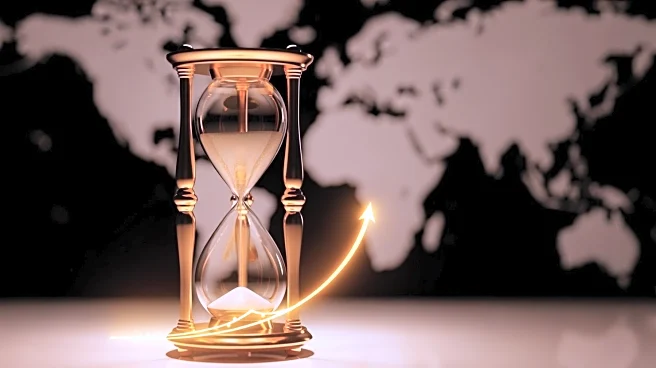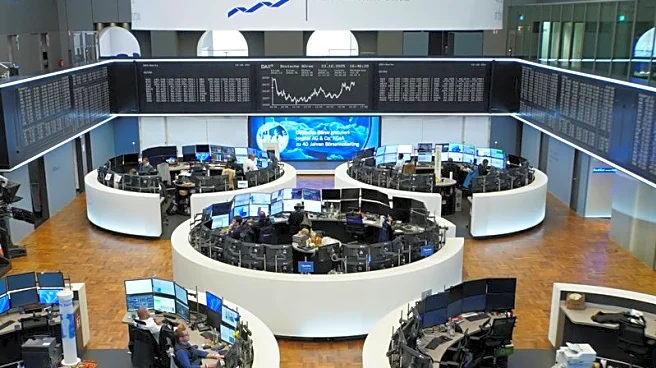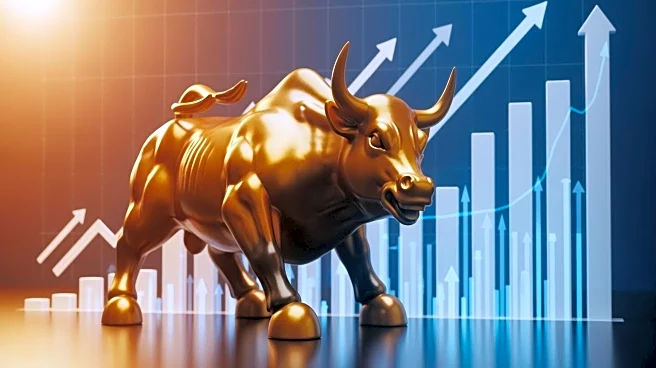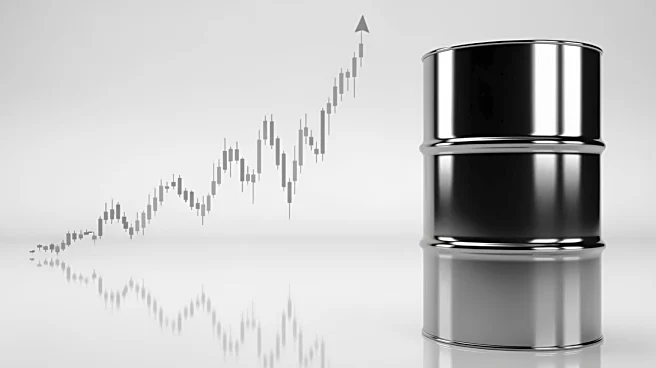What's Happening?
Gold prices have surged to unprecedented levels, reaching a record high of $4,381 per ounce on October 20, 2025, before settling at approximately $4,118 per ounce by October 24. This marks a significant
increase of 55-57% for the year, the largest annual jump since the late 1970s. The rise in gold prices is attributed to several factors, including the Federal Reserve's anticipated rate cuts, which are expected to lower the opportunity cost of holding non-yielding gold. Additionally, geopolitical tensions, such as the ongoing conflicts in Ukraine and the Middle East, as well as U.S. political uncertainties, have bolstered gold's appeal as a safe-haven asset. Massive inflows into gold exchange-traded funds (ETFs) and central bank purchases have further supported the price surge.
Why It's Important?
The soaring gold prices reflect broader economic and geopolitical dynamics that could have significant implications for various stakeholders. For investors, the current environment presents both opportunities and risks, as gold is traditionally seen as a hedge against inflation and economic instability. The Federal Reserve's potential rate cuts signal a shift in monetary policy that could impact the U.S. dollar's strength and influence global financial markets. For industries reliant on gold, such as jewelry and electronics, the price increase may lead to higher production costs. Additionally, the geopolitical tensions contributing to gold's rise highlight ongoing global uncertainties that could affect international trade and economic relations.
What's Next?
Looking ahead, the Federal Reserve's upcoming meeting on October 29-30, where a rate cut is highly anticipated, will be a key event for financial markets. Further rate cuts are also expected in December, which could continue to influence gold prices. Investors will be closely monitoring U.S. inflation data and geopolitical developments, particularly any changes in U.S.-China trade relations and the outcomes of potential meetings between President Trump and Chinese President Xi Jinping. Analysts predict that while gold prices may experience volatility, the long-term trend remains bullish due to persistent global risks and central bank demand.
Beyond the Headlines
The current gold market dynamics underscore the complex interplay between monetary policy, geopolitical tensions, and investor behavior. The Federal Reserve's easing stance, coupled with global uncertainties, has prompted a reevaluation of traditional investment strategies, with gold emerging as a preferred asset for risk-averse investors. This trend may lead to a reevaluation of asset allocation strategies among institutional investors, potentially influencing broader market trends. Additionally, the geopolitical factors driving gold's rise highlight the interconnectedness of global economies and the potential for policy decisions in one region to have far-reaching impacts.












